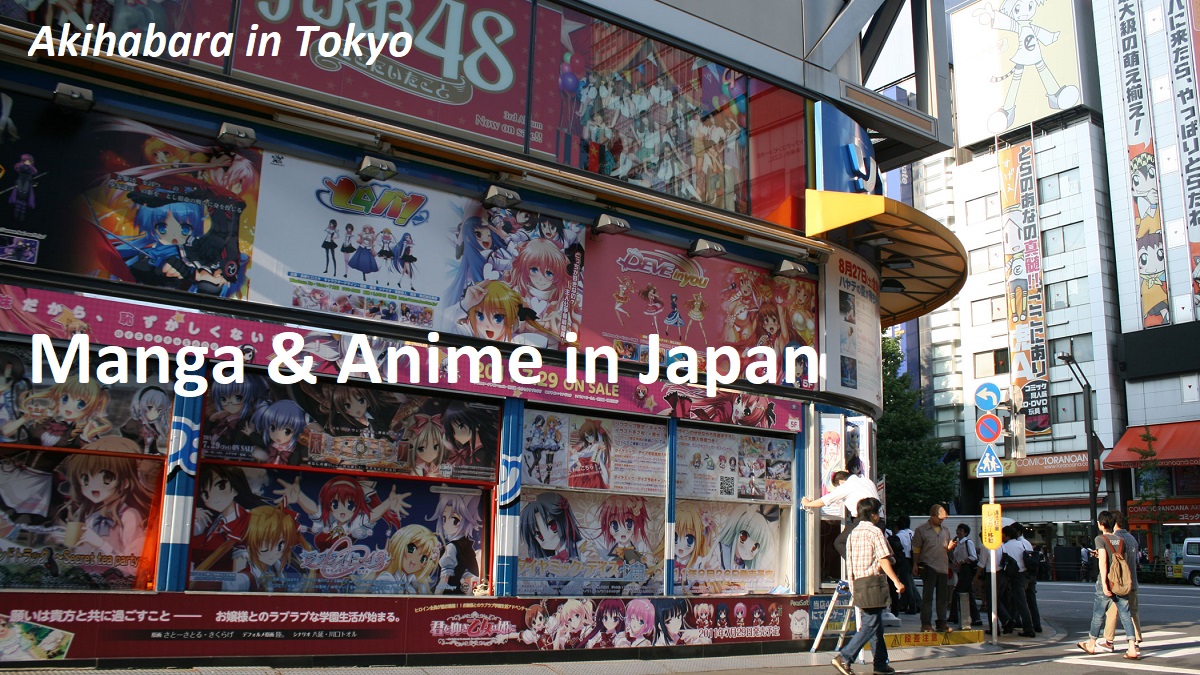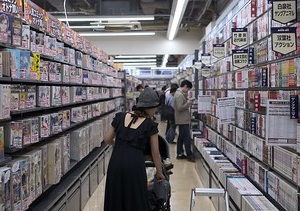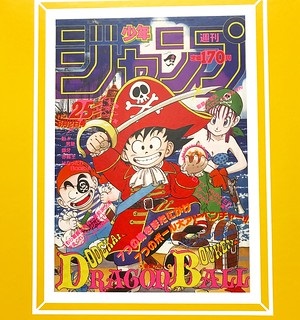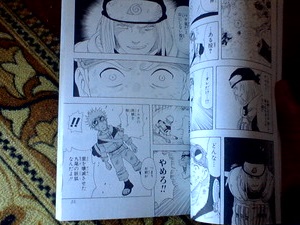Japanese manga and anime
History of manga and anime in Japan
The origin of manga
Some comical paintings are found in many works in the Middle Ages.
Katsushika Hokusai (1760-1849), who was a famous Ukiyoe artist, also created cartoony caricatures.
Between the late the 19th century and the beginning of 20th century, early manga works were created.
Most of them were caricatures, and they were affected by American ones.
Additionally, some artists created manga with story and they became the prototype of modern manga.
Early manga
The word "manga" means "drawing a picture at will" and it was created around this period.
In the 1930s, some manga books for children were created, and they became best-sellers.
But they were expensive, so many children could not buy them.
In 1941, Japan launched the Pacific War (World War II), so creation of manga declined under the wartime regulations by the military.
In 1945, Japan defeated the war, but manga revived for children soon.
In the 1950s, many shops for rental books were opened.
Every child was able to read any manga with their pocket money, so the service developed.
The start of current style of manga
In the early 1950s, Tezuka Osamu (1928-1989) who was a great pioneer of modern Japanese manga built up the manga style with dramatic and long story.
His great works are Mighty Atom (Astro Boy, 1952-1968), Hi no Tori (Phoenix, 1956, 1967, 1986), Black Jack (1973-1983), etc.
He lived in a small apartment in Tokyo and had created many manga works there.
And many capable manga artists longing for Tezuka came from all over the country.
They created various manga works for rental comic and the style of Japanese manga had established.
In the 1960s, Japan entered high-growth era, and television spread around country.
In this time, "Popeye" or Disney's cartoon from U.S. hit the air.
In 1963, Mr.Tezuka started the first Japanese TV cartoon "Mighty Atom (Astro Boy)", and it captivated children in whole Japan.
Around the same time, some comic magazines for boys and girls started.
Especially, weekly magazines have some long serialized manga works, and they attracted the boys and girls for long time.
Popular manga works in the magazines were made into TV cartoon, so both magazine and TV were developed.
Such way became a mainstream for Japanese manga.
In addition, popular mange works were shown in movie theaters after editing for the screen.
Above popular serial manga works are published in book form.
It is called Tankobon in Japanese, and many tankobon are sold in most bookstores.
In most cases, a Tankobon contains about 200 pages and they are for 10 weeks of the magazine.
Some popular long manga works consist of over 100 volumes.
Development of anime
In the 1980s, a word "anime" from "animation" began to be used as TV cartoon and movie of manga.
So the "manga" became the word for paper and electric comic book.
Since the middle of 1980s, many anime production companies like STUDIO GHIBLI have been established and produced the anime films for movie theater and DVD.
Some movies have become big hits around the world.
Now, "manga" and "anime" are the important cultures in Japan.
The subjects are broad, and many manga artist are creating now.
Feature of Japanese Manga
Manga in the comic magazine and Tankobon have the following characteristics.
Basically, the works are drawn in black and white.
(The pictures on the cover of the book are colored.)
The works are created for Japanese readers.
So, the structure and design of the page follow the characteristic of Japanese notation.
Sentences in Japanese languge are basically written vertically and the vertical lines in the speech ballon of manga are read from right to left.
Therefore, the reader sees the flames of the picture in every page in a direction from right to left.
That is the opposite direction of cartoon magazine in English.
Needless to say, the reader reads from the right page to the left page.
Japanese language has kanji characters (Chinese characters).
So, each speech can be written with less number of characters than the other languages using alphabet.
Speech ballons in English comic often occupy the frame horizontally and widely to write long word.
Speech ballons in Japanese manga are relatively compact and vertical.
They don't obstruct the picture, and each picture is easy to see.
In addition, not only Japanese interjection, onomatopoeia but also Japanese slang, abbreviation are used frequently, and the words are very short.
It is hard to translate into the other language.
Japanese manga has a wide range of subjects and a story line.
Various mangas are created for children, for young boys and girls, for adults, etc.
And most manga works are serialized.
Feature of Japanese Anime
It is certain that Japanese anime developed from Japanese manga.
Manga is basically serialized by a manga artist.
But, in anime, a moving video work completing in one issue is created by a team of scenario writer, designer, animator, etc. under the director and producer.
The story is intersting and deep.
The picture is beautiful and delicate.
Professional voice actors and actresses are appointed and the music for the work is composed.
It is like a cinema.
Japanese companies of Manga and Anime
Major Manga publishers
Because manga books are for Japanese people, the websites of the publisher are mainly in Japanese language.
Popular animation production companies
Weekly Manga magazines (Japanese websites)
Popular characters in Japan
The main character in manga or anime becomes very popular, and it is often used in various products.
And some characters for products or advertisement are very popular.
Some of them are also popular in the world.
The followings are the website for the popular characters.
(Some of them are Japanese websites.)
Tourist spots relating to Manga and Anime
Town
The followings are popular as the town of manga and anime.
There are many shops for comic book, novel, music and visual software, game software.
In addition, relating to the fantasy world, there are "maid cafes" and the shops for "cosplay".
The followings are the towns and spots for particular manga, anime or its artist.
Enthusiastic fans of an anime movie visit the location in the movie to see the real places.
Especially, the travel is called "pilgrimage".
Museum, Amusement Park
There are some museums about manga and anime in Japan.
Many of them are the museum for an artist of manga and anime.





